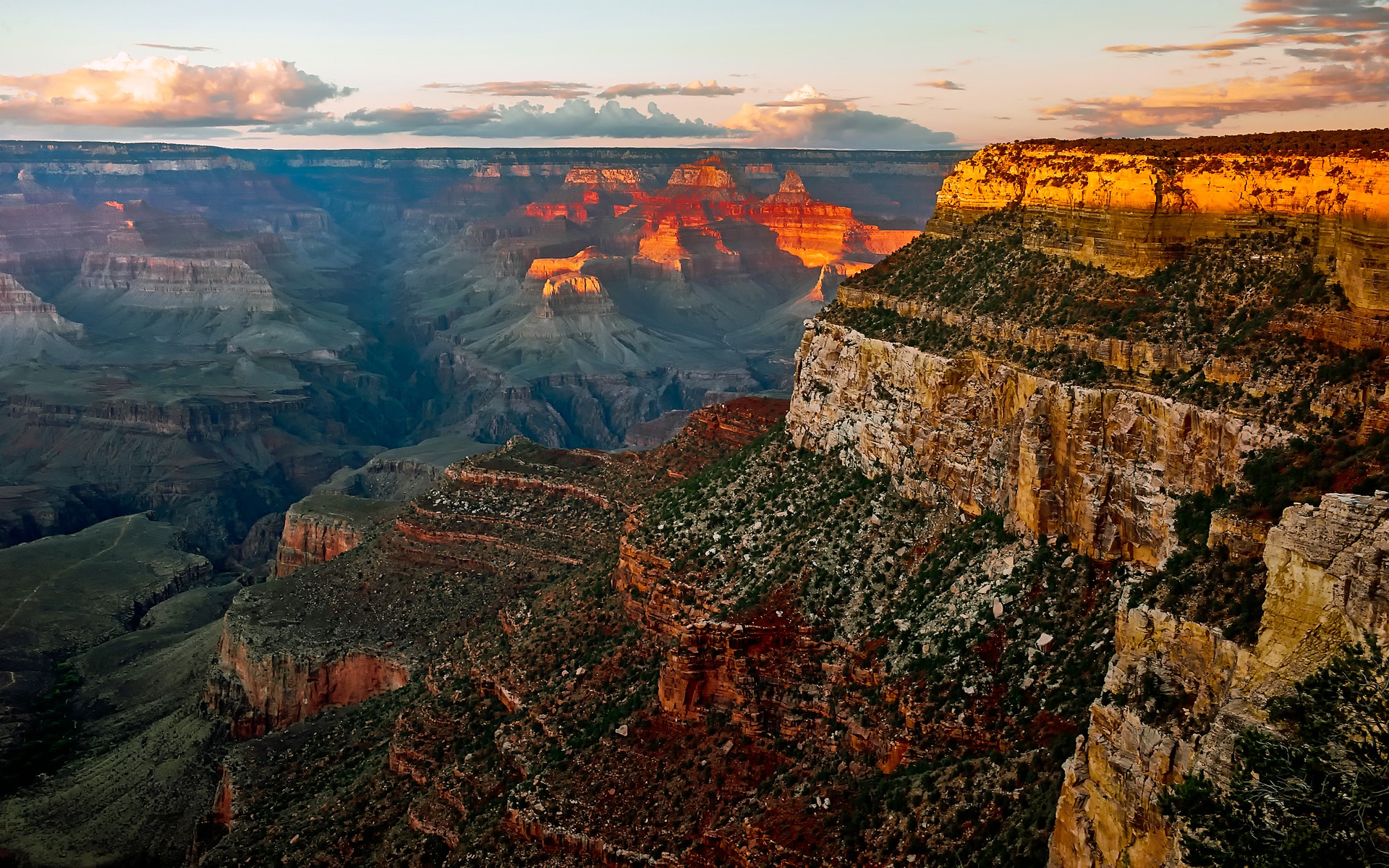Geographical Statistics of the United States
The United States of America is a North American nation stretching between the Pacific and Atlantic Oceans. The continental United States consists of 48 of its 50 member states. It is bordered by Canada to the north and Mexico to the south. In addition, the nation includes the states of Alaska and Hawaii as well as the territories of Guam, Puerto Rico, the Virgin Islands, American Samoa, and the Northern Mariana Islands. Its capital, the District of Columbia, is a separate federal district.
The total land area of the states, not including territories, is 3,531,905 square miles or 9,147,593 square kilometers. As of 2017, the nation was home to an estimated 326,625,791 people.
Landscapes and Climate of the United States
The United States is a large country with many different climates and landscapes. Two major mountain ranges divide it: the Appalachians in the east and the larger Rockies in the west. The majority of area between these ranges is covered by the Great Plains, a vast expanse of grasslands and river valleys. This region once supported vast herds of migrating bison. It is now dominated by farmland and pasture and known as the breadbasket of the United States. The longest river in the country, the Missouri River, travels from the Rockies to the state of Missouri before meeting the Mississippi.
The Northeast, along the Atlantic coast, is more heavily forested and experiences cold winters. The Northeast claims the highest population density in the country thanks to large cities like New York, Boston, Philadelphia, and Washington, D.C. It is best known for its scenic coastlines and deciduous forests.
The warmer South extends down the remaining East Coast and along the Gulf of Mexico. Its landscapes tend toward low-lying wetlands and humid forests. The South is another major agricultural center of the United States. Among its natural attractions are the Everglades of Florida, a tropical wetland covering the southern tip of the state. The Mississippi River has also played an important role in its cultural and economic development.
The Pacific Coast and its inland regions are generally divided between the Southwest and Pacific Northwest. The Southwest is primarily hot and arid. It is famous for its deserts and geologic formations, including the Grand Canyon and Monument Valley along the border of Utah and Arizona. Death Valley, the lowest point in North America, is part of the country’s driest desert, the Mojave.
The Pacific Northwest, divided by the Cascade Mountain Range, contains both wet and dry climates. The more populated Pacific coast sees mostly overcast, rainy weather and a mild climate. As one of the last settled regions of the United States, much of its forests are protected by national parks. Most famous of these are the redwood forests bordering Oregon and California, Yosemite National Park in California’s Sierra Nevada Range, and the temperate Hoh Rainforest in Washington. California, moving south, slowly grows more arid.
Alaska and Hawaii, the remaining two states, possess very different climates. Alaska ranges from temperate rainforests similar to those of the Pacific Northwest to vast icy plains in the north. Denali, located near Anchorage, is the tallest mountain peak in the country. The state is also home to its largest national forest, Tongass. Hawaii, meanwhile, is a tropical, volcanic archipelago in the Pacific. Its eight main islands are popular tourist destinations.
The United States also claims high biodiversity within its many landscapes. Among its best known wildlife are the bison, several species of bear, deer, elk, moose, coyotes, pronghorn antelopes, wolves, and its national symbol, the bald eagle.
Learn More About American Culture
Cultural Overview | Geography | History | Daily Life | Society | Economy | Beliefs | Arts & Music
References
Grant, Susan-Mary. A Concise History of the United States of America. Cambridge University Press. 2012.
National Geographic Society. National Geographic Guide to National Parks of the United States. National Geographic Books. 2012.
Nies, Judith. Native American History: A Chronology of a Culture's Vast Achievements and Their Links to World Events. Random House Publishing Group. 2012.
Remini, Robert. A Short History of the United States: From the Arrival of Native American Tribes to the Obama Presidency. Harper Collins. 2009.
“The World Factbook: United States.” Central Intelligence Agency, Central Intelligence Agency, 5 Sept. 2018, www.cia.gov/library/publications/the-world-factbook/geos/us.html.
Zinn, Howard. A People's History of the United States: 1492-Present. Routledge. 2015.
About TOTA
TOTA.world provides cultural information and sharing across the world to help you explore your Family’s Cultural History and create deep connections with the lives and cultures of your ancestors.




